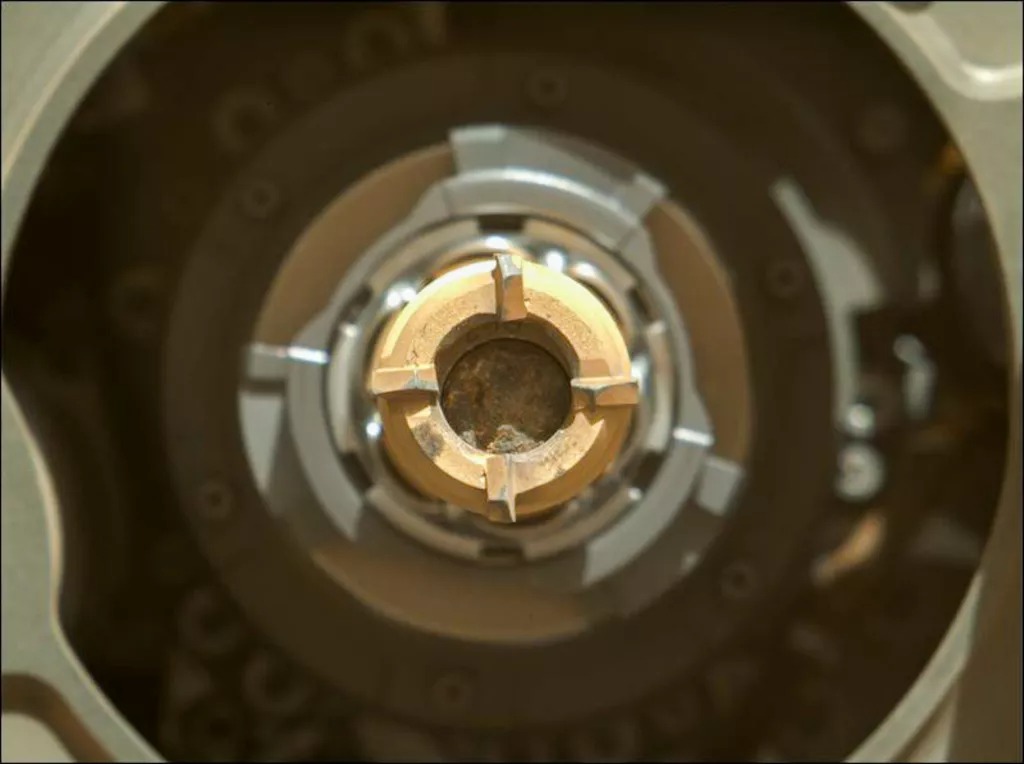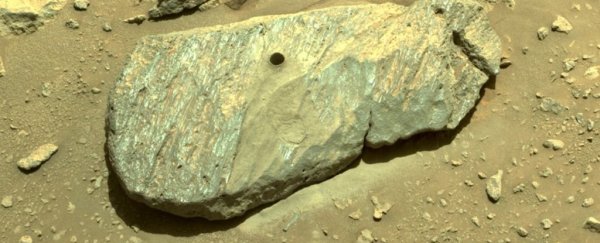Following a failed first attempt last month, NASA's Perseverance rover has successfully drilled and captured a perfect rock core from the Red Planet. This puts scientists one big step closer to their goal of someday returning the rock sample to Earth, in order to study it for signs of ancient microbial life, according to NASA.
Perseverance (or "Percy" to its friends) made its latest drill attempt on Wednesday (Sept. 1), after selecting a large, thick-looking rock that NASA researchers nicknamed "Rochette".
The boulder sits on a ridge overlooking the nearby floor of Jezero crater, where it has endured the elements of Mars for potentially millions of years.
That endurance is exactly what the Perseverance team was looking for; the rover's first attempt to collect a rock core several weeks ago ended in disappointment, as the rock sample proved too crumbly and literally disappeared from the rover's grasp.
But new images of the Rochette drilling operation show that, this time around, there were no surprise disappearances.
"You can see a beautiful rock core" in the rover's collection tube, Kenneth A. Farley, a professor of geochemistry at the California Institute of Technology and the project scientist for Perseverance, told the New York Times.
 A Martian rock core sample, about the width of a pencil, sits inside Perseverance's collection tube. (NASA/JPL-Caltech)
A Martian rock core sample, about the width of a pencil, sits inside Perseverance's collection tube. (NASA/JPL-Caltech)
Perseverance will store the sample — which is about as thick as a pencil — in its belly for the duration of its mission, exploring the dried-up ruins of ancient rivers in Jezero crater.
But one day, perhaps a decade or so from now, Percy will place all of its samples onto the Martian floor, where another, as-yet-unbuilt rover will come along to shepherd them to a small rocket, according to The Times.
That rocket will return the samples to the safety of Earth, where scientists can analyze them in meticulous detail that Perseverance could never match.
That return trip likely won't happen until at least the 2030s. In the meantime, a triumphant Percy will continue to chug along the Red Planet, now one rock sample heavier.
Related Content:
Voyager to Mars Rover: NASA's 10 greatest innovations
9 strange excuses for why we haven't met aliens yet
Here's what NASA's Opportunity rover saw before 'lights out'
This article was originally published by Live Science. Read the original article here.
